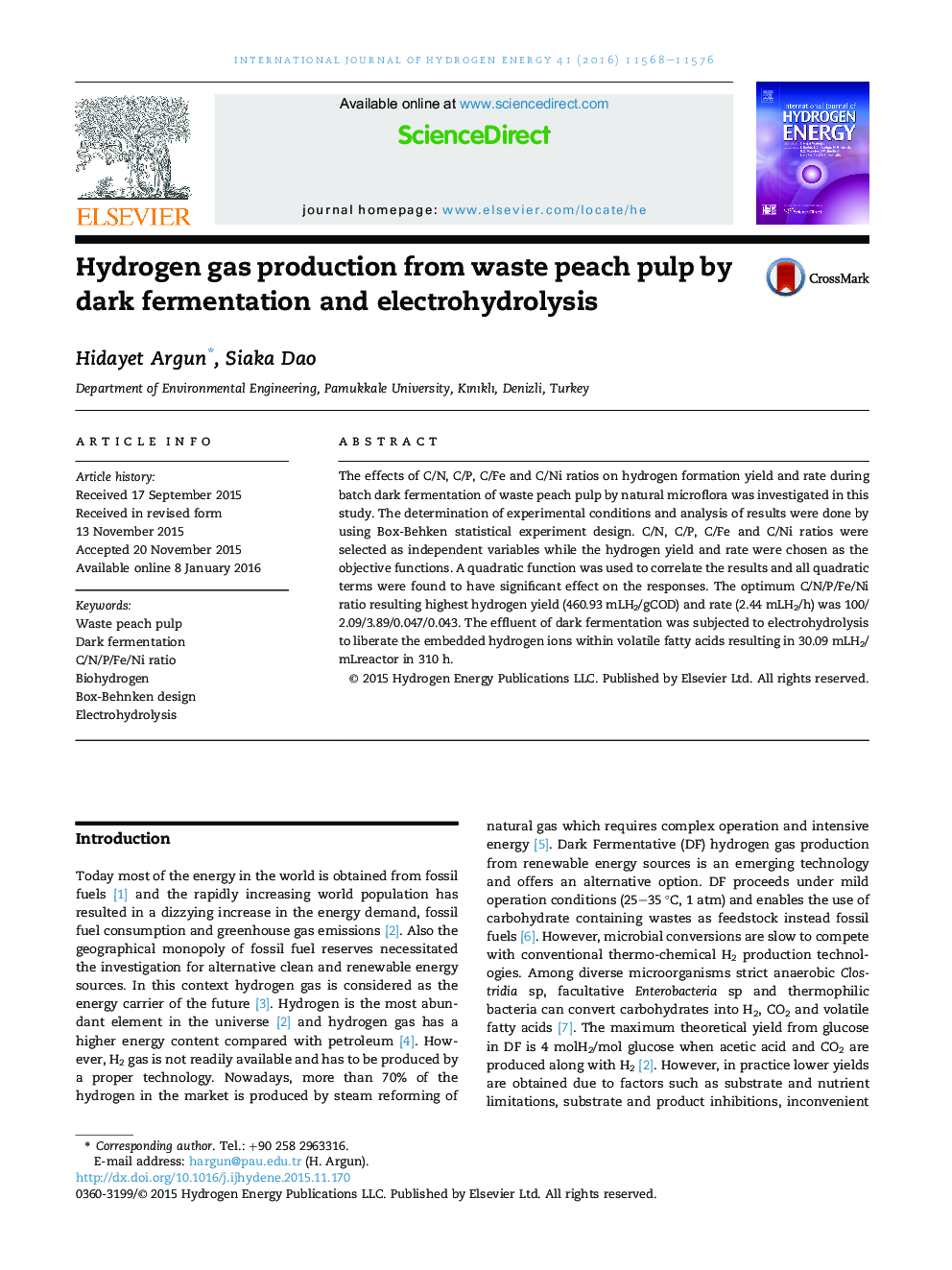| Article ID | Journal | Published Year | Pages | File Type |
|---|---|---|---|---|
| 1268485 | International Journal of Hydrogen Energy | 2016 | 9 Pages |
•Waste peach pulp is a suitable substrate for H2 production in DF and EH.•Natural bacteria were able to produce H2 reducing inoculum costs and handling.•Optimum C/N/P/Fe/Ni ratio resulting highest yield and rate was 100/2.09/3.89/0.047/0.043.•Total yield of sequential DF and EH was 30.09 (mLH2/mL) with 57% energy efficiency in EH.•Coupling EH to DF was efficient for completing the H2 production process.
The effects of C/N, C/P, C/Fe and C/Ni ratios on hydrogen formation yield and rate during batch dark fermentation of waste peach pulp by natural microflora was investigated in this study. The determination of experimental conditions and analysis of results were done by using Box-Behken statistical experiment design. C/N, C/P, C/Fe and C/Ni ratios were selected as independent variables while the hydrogen yield and rate were chosen as the objective functions. A quadratic function was used to correlate the results and all quadratic terms were found to have significant effect on the responses. The optimum C/N/P/Fe/Ni ratio resulting highest hydrogen yield (460.93 mLH2/gCOD) and rate (2.44 mLH2/h) was 100/2.09/3.89/0.047/0.043. The effluent of dark fermentation was subjected to electrohydrolysis to liberate the embedded hydrogen ions within volatile fatty acids resulting in 30.09 mLH2/mLreactor in 310 h.
